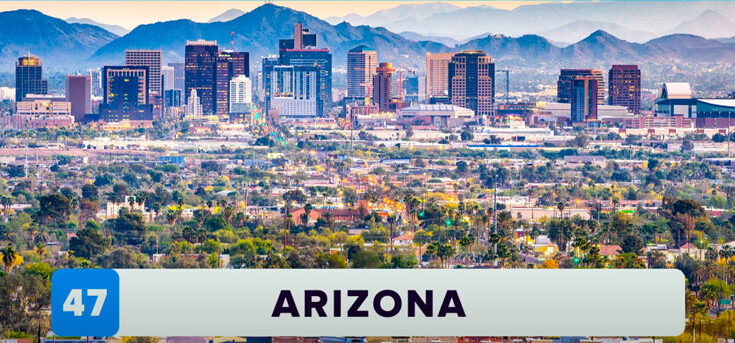Contributed Photo/Screengrab via Wallet Hub
By Adam McCann/Financial Writer – Wallet Hub
WASHINGTON D.C. – Get ready to crank up your air conditioner — and utility budget. July tends to be the hottest month of the year. In the U.S., energy costs eat between 5% and 22% of families’ total after-tax income, with the poorest Americans, or 25 million households, paying the highest in that range. Lower energy prices don’t necessarily equate to savings, though. Where we live and how much energy we use also factor into the equation. It’s important to consider energy consumption when choosing a place to live, as around 27% of American households have difficulty meeting their energy needs.
To better understand the impact of energy on our finances relative to our location and consumption habits, WalletHub compared the total monthly energy bills in each of the 50 states and the District of Columbia. Our analysis uses a special formula that accounts for the following residential energy types: electricity, natural gas, motor fuel, and home heating oil.
Arizona ranked 47 out of 51 states and the District of Columbia in terms of the total cost at $403 per month. The state’s breakdown included being 10th in electricity cost at $150, 48th in natural gas cost at $52, 30th in motor fuel cost at $187, and 43rd in home heating oil cost at $14; all expenditures listed are monthly.
The top-three costliest energy states are Wyoming, Alaska, and North Dakota, at $738, $625, and $611 total monthly energy costs, respectively.
The least expensive energy states include the District of Columbia as the least costly at $277 per month, followed by New Mexico at $377 per month, Nebraska at $390 per month, Kansas at $396 per month, and Arizona at $403 per month.
Ask the Experts
According to the U.S. Energy Information Administration, the highest energy consumption of the year is recorded in July, followed by August. That leads to higher energy costs during this period. For advice on reducing our dependence on traditional energy sources and cutting costs, we asked a panel of energy and policy experts to share their thoughts on the following key questions:
- What are some good tips for saving money on energy bills?
- What makes energy costs higher in some states than in others?
- Are tax deductions and credits effective at incentivizing households to be more energy-efficient?
- Do you believe the government should continue to provide energy assistance to low-income households? If so, what’s the best way?
- As economic activity resumes within strict limitations and with many employees still working from home, what is the impact on energy production and prices?
Methodology
In order to determine the most and least energy-expensive states, WalletHub compared the average monthly energy bills in each of the 50 states and the District of Columbia using the following equation:
(Average Monthly Consumption of Electricity * Average Retail Price of Electricity) + (Average Monthly Consumption of Natural Gas * Average Residential Price of Natural Gas) + (Average Monthly Consumption of Home Heating Oil * Average Residential Price of Home Heating Oil) + (Average Motor-Fuel Price * (Miles Traveled/Average Motor-Fuel Consumption/Number of Drivers in the State)) = Average Monthly Energy Bill in the State
Sources: Data used to create this ranking were collected from the U.S. Census Bureau, U.S. Energy Information Administration, Federal Highway Administration, American Automobile Association, National Highway Traffic Safety Administration, and the United States Environmental Protection Agency.








